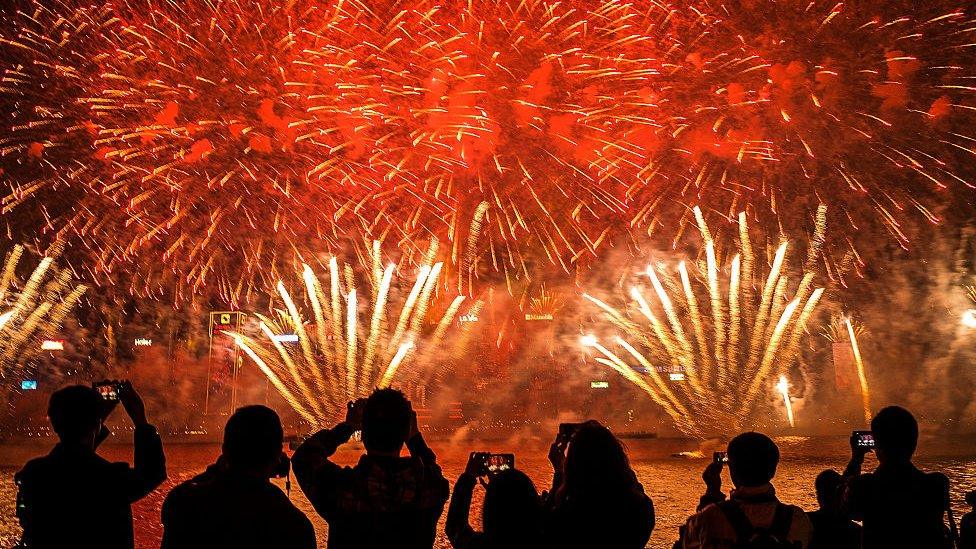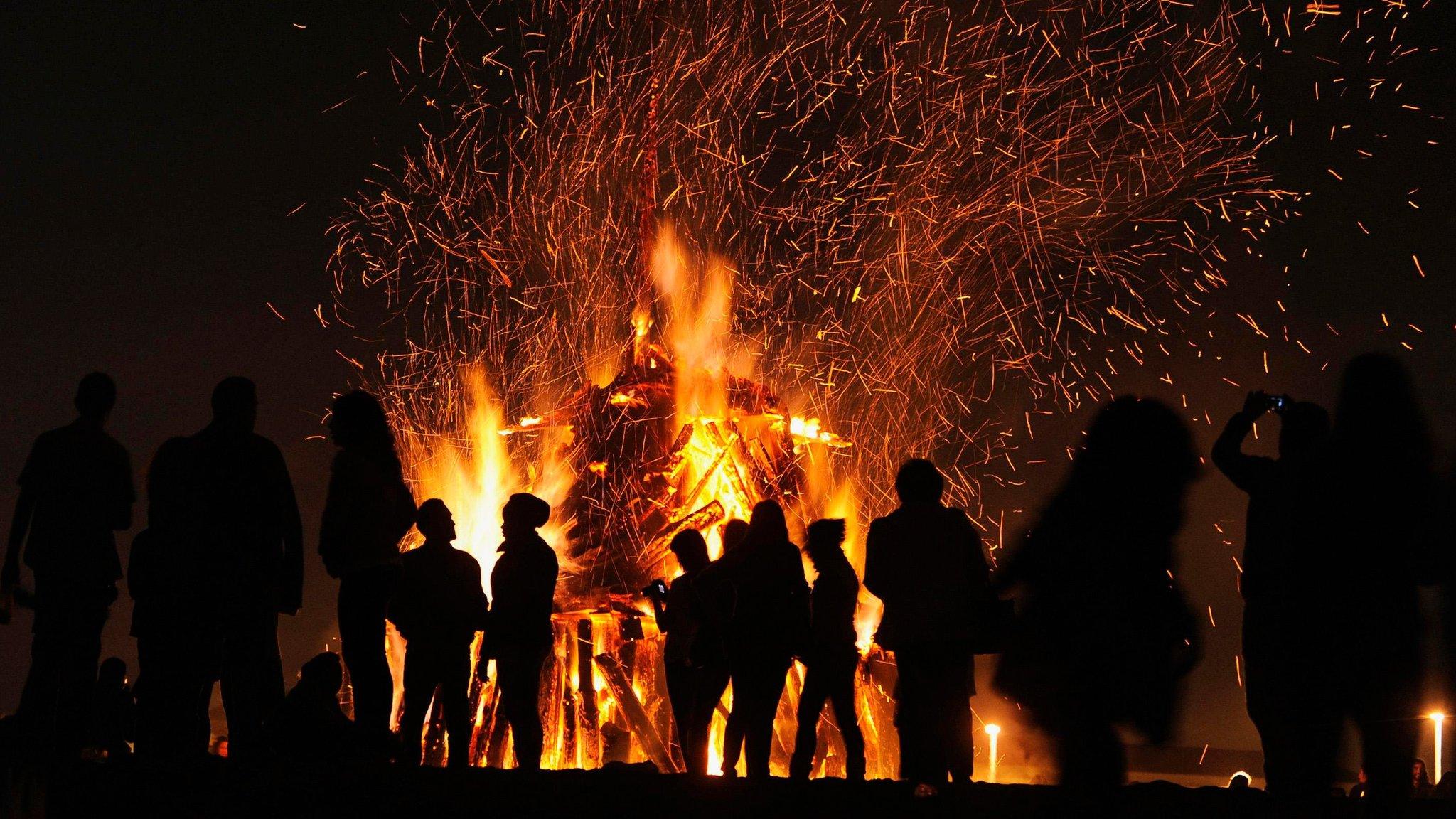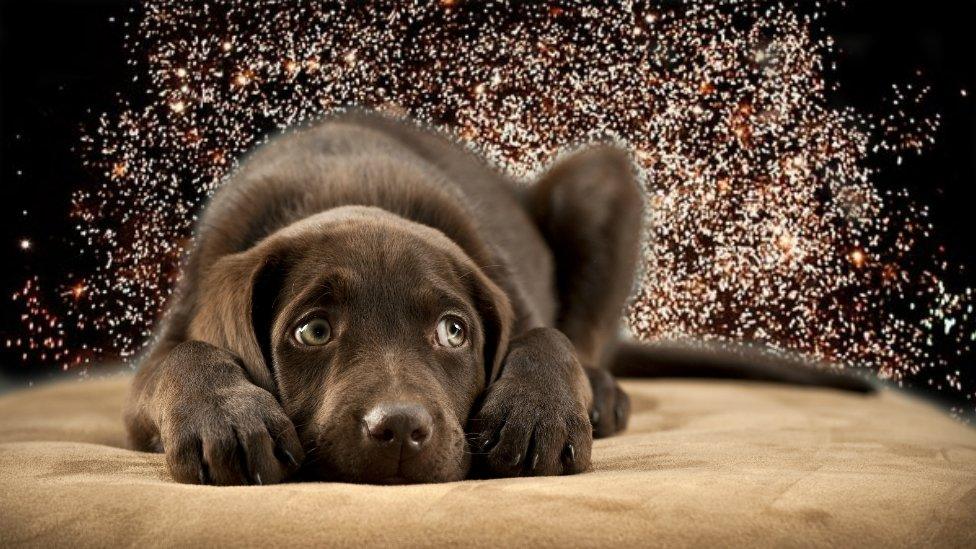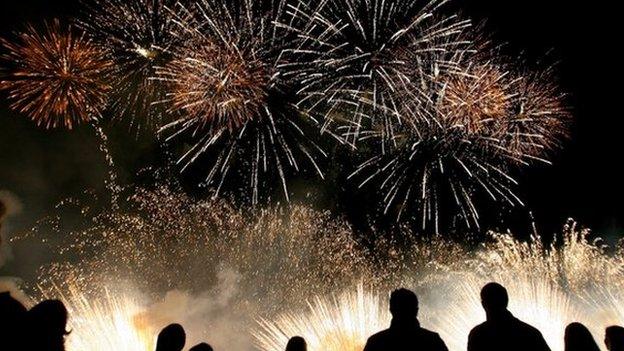Bonfire Night: Fantastic things about fireworks
- Published

It's almost Bonfire Night - and that means firework displays and toasty bonfires!
The tradition of Bonfire Night dates back to 1605, when Guy (Guido) Fawkes was part of something called the Gunpowder Plot.
This was a plan to blow up King James I and his government on 5 November. However Guy's plot was rumbled, and he and his supporters were arrested and executed.
We remember this event today by setting off fireworks and lighting bonfires to burn the 'Guy'...
A kind of dummy figure that represents Fawkes and is placed on top of the bonfire.
Here at Newsround we've got some top firework facts to share this Bonfire Night! So here goes!
Not during the War!
During World War I and World War II, no one was allowed to set off fireworks or light bonfires.
This was part of an act of parliament in 1914 called The Defence of the Realm Act, which aimed to protect people during the war by not showing the enemy where they were.
But, up until 1959, it was illegal NOT to celebrate Bonfire Night in Britain, so during this time people celebrated the event indoors.

Expert tips for taking pics!
It's not always easy taking pics of fireworks.
Sometimes you miss them explode, or the camera on your phone struggles to focus. BUT, Newsround at the rescue...
...Here's some tips for taking really good firework photos on your mobile phone.
If you cannot see the interactive on this page, click here.
Super sparkler science
Sparklers are often found at Bonfire Night parties, but they can get incredibly hot!
Some sparklers can reach temperatures of 1000-1600 Celsius - that's around 15 times hotter than the boiling point of water! Which is why you must always wear gloves and only use when parents are with you.
Firework rockets can reach speeds of 150 miles per hour (mph) when they are set off. So that's why we stand WELL back when they are being lit!
The reason why you can see a firework explode before you can hear the bang, is because light travels much faster than sound.
Sound travels at a speed of 761 mph, but light travels at a whopping 671,000,000 mph - so you may see it before you hear it!
WATCH: How are fireworks made?
When were fireworks first discovered?
Thousands of years ago, a group of Chinese scientists accidently mixed together chemicals to make an early form of gunpowder.
This was stuffed into old bamboo stalks and thrown into a fire to make a loud bang.
These were thought to be the first fireworks.
The Chinese then used this invention to scare away their enemies and evil spirits.
In the 1830s, Italian inventors invented a special casing which let them fire fireworks into the air.
They also came up with ways to mix in different metallic powders to create different coloured explosions.
WATCH: Your top tips on how to stay safe on Bonfire Night
First UK firework display
The very first fireworks display in England took place at Henry VII's wedding to Elizabeth of York in 1486.
The wedding was a pretty big deal because Henry and Elizabeth came from two families - the Lancaster's and the York's - who had been fighting for many years.
When the two married, it brought peace to the two houses and stopped the fighting.
Another royal who loved fireworks was Queen Elizabeth I, who even created an honorary title - "Fire Master of England" - for the person who created the best fireworks.
- Published5 November 2022

- Published5 November 2021

- Published18 October 2011

